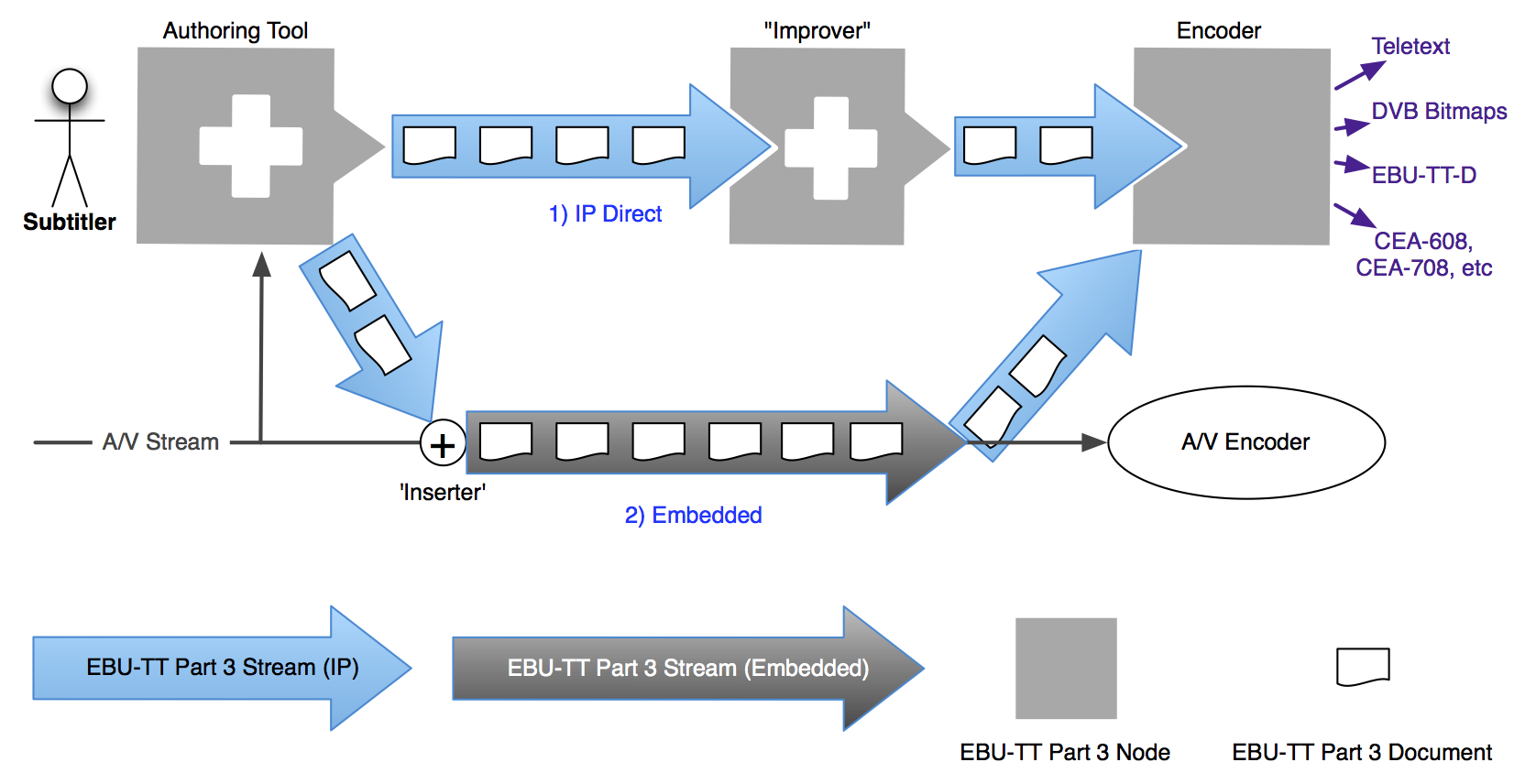The use of TTML in live subtitle and caption flows
Nigel Megitt, British Broadcasting Corporation
Wednesday 23rd March 2016, CSUN
http://bbc.github.io/ttml-in-subtitle-flows-csun-presentation/

Nigel Megitt, British Broadcasting Corporation
Nigel Megitt, British Broadcasting Corporation
Wednesday 23rd March 2016, CSUN
http://bbc.github.io/ttml-in-subtitle-flows-csun-presentation/

Since I’m talking today mainly about the EBU-TT family of specifications, I guess I’ve got both a BBC and an EBU group chair hat on right now. Two hats for the price of one!
TTML is a markup language based on XML, using structural elements like in (X)HTML: - <head>, <body>, <div>, <p> and <span>, with styling semantics taken from XSL-FO/CSS and timing semantics taken from SMIL.
Styling and layout are applicative: <style>s and <region>s are defined and identified, and content elements can reference them;
inline style attributes are ok too.
tt<tt>
<head>
...
</head>
<body>
...
</body>
</tt>
head<head>
<styling>
<style xml:id="style1" tts:color="blue" ... />
</styling>
<layout>
<region xml:id="region1" tts:origin="20% 80%" ... />
</layout>
<metadata> <!-- info about the document -->
</head>
body<body>
<div>
<p begin="10:11:12.345" end="10:11:13"
region="region1" style="style1">
<span ttm:role="sound">Bang!
<br/>Whoosh!</span>
</p>
</div>
</body>
| Specification | Part of the chain | Status |
|---|---|---|
| EBU-TT Part 1 | Prepared subs to Playout or Archive | v1.1 Stable |
| EBU-TT Part 2 | From legacy STL to EBU-TT Part 1 | v0.9 draft |
| EBU-TT Part 3 | Live subs to Encoder | v0.9 draft |
| EBU-TT-D | From encoder/packager to audience | v1 Stable |
| EBU-TT-D in ISOBMFF | For e.g. MPEG DASH packaging | v1 Stable |
They are TTML profiles in that they constrain the allowed feature set from the bigger TTML set, and add some extensions.


Live streaming from subtitler or playout automation to encoders is the last piece in the puzzle needed to allow subtitles to be authored, stored, played back and delivered in the broadcast environment using TTML.
We left it to last because it is arguably the most complex part. Before we go ahead and move this to v1 we want to make sure it works and that despite our careful thought we haven’t missed anything. We also want to make it as easy as possible to build interoperable products that use it.
So we’re initiating a new open source project to build an Interoperability Toolkit, a kind of reference implementation.
So far it has a github project with a release plan in the wiki section.
Contributions to the project are welcome from all sources. If you’re interested in contributing please talk to me!
EBU-TT-D can do everything that the other formats can do in presentation terms but is simplified as much as possible for easy implementation - for example:
W3C recently published a Proposed Recommendation of the TTML Profiles for Internet Media Subtitles and Captions 1.0 (IMSC1).
EBU-TT-D is effectively a subset of the IMSC 1 Text profile.
You’d really have to go out of your way to create an EBU-TT-D document that is not IMSC 1 Text Profile conformant.
We’re on the way to implementing this:
The EBU-TT family of TTML-based specifications is an open standard that supports the whole chain for broadcasters and others:
Time for:
Nigel Megitt, Executive Product Manager Access Services, BBC nigel.megitt@bbc.co.uk
Slides created using shower/jekyller